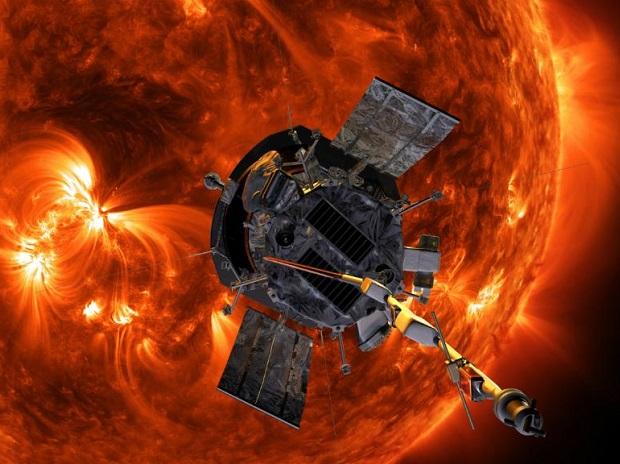
The Sun has always been a source of research for astrophysicists around the world. From nuclear fusion studies to deadly collisions from the surface. Chandrayaan-2, which is orbiting the Moon, has discovered new development on the brilliant star Corona’s heated outermost layer.
The Indian Space Research Organisation (ISRO) announced that an instrument on board India’s Chandrayaan-2 mission has given excellent scientific discoveries on the solar corona and heliophysics. Some of these mysteries are linked to the Sun’s heated corona. This generates a lot of light in the ultra-violet and X-ray wavelengths of the electromagnetic spectrum.
The ‘coronal heating dilemma’ refers to the fact that his observation violates the natural expectation that temperatures should drop as we go away from the source of energy. According to the ISRO, observations such as the presence of corona called active regions above Sunspots (dark patches seen in visible images of the Sun). The magnetic fields are known to be stronger suggests that magnetic fields play a key role in coronal heating.
The corona emits temperatures above 2 million degrees Fahrenheit, ultraviolet and X-rays, and is made up of ionized plasma. The photosphere, which is 1,000 miles below the surface, has a temperature of 10,000 degrees Fahrenheit. The coronal heating problem is the name given to this strange temperature.
According to the latest findings, the high temperatures observed as they move away from the surface could be caused by strong magnetic fields existing above the Sunspots (dark patches seen in visible images of the Sun).
“This was the first observation and statistical study of such a large sample of microflares in the quiet Sun,” according to the update. “Supporting the notion of the presence of even smaller scale flares everywhere over the solar corona that could be responsible for coronal heating.”
The X-ray emission is unusually consistent across these 76 days, excluding the periods of the microflares. Since space-borne measurements began, this is the lowest intensity of X-ray emission seen from the Sun. The excellent research discoveries on the solar corona and heliophysics obtained utilizing a sensitive instrument aboard Chandryayaan-2 observations during a unique solar very quiet phase are reported in two companion publications in the May issue of the Astrophysical Journal Letters.
“Both the Chandrayaan-2 orbiter and the XSM instrument are operating exceptionally well, and many more intriguing and novel results are expected,” the statement said.









